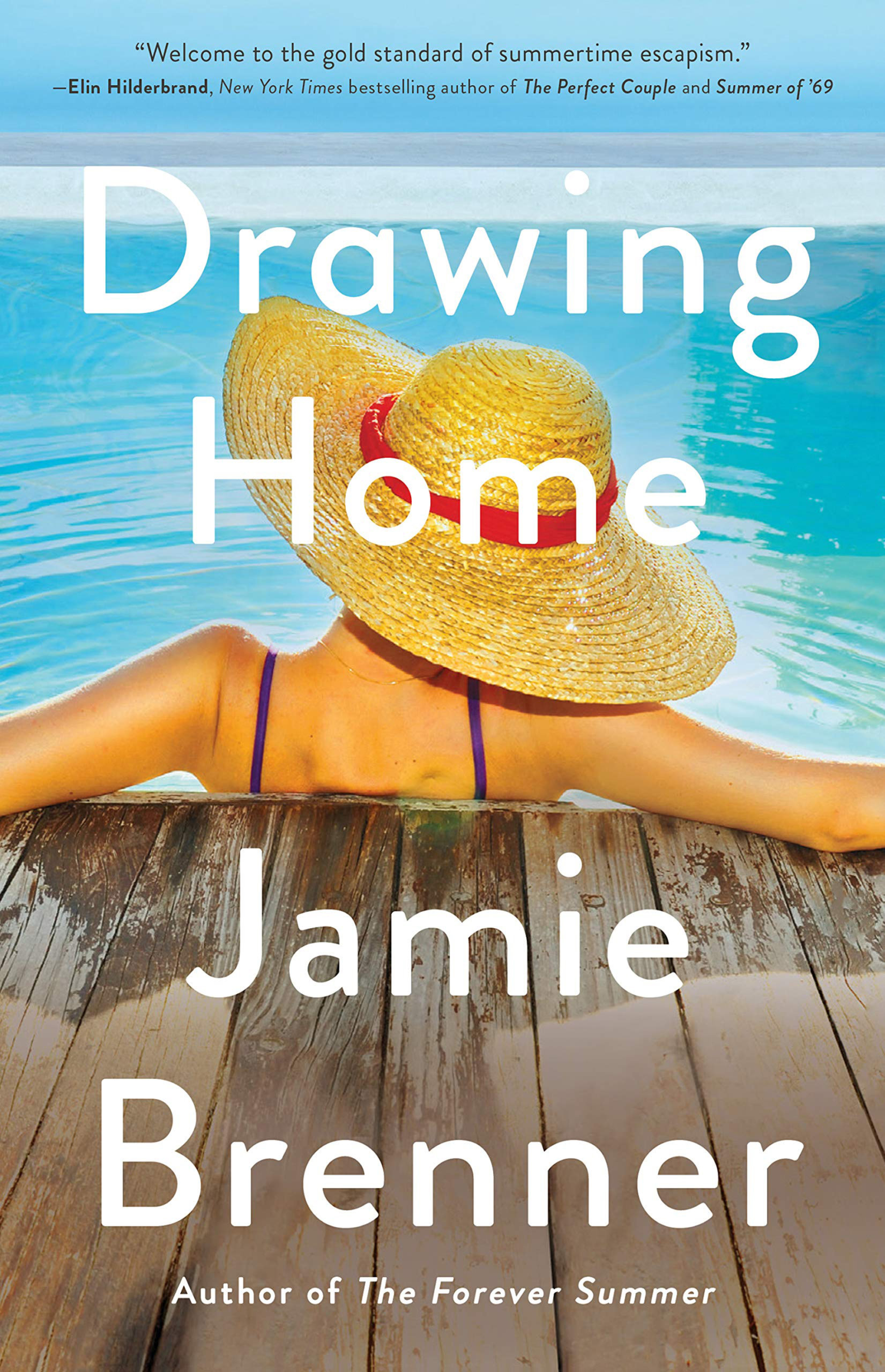‘Drawing Home’ Set In Sag Harbor


The last three words of this engaging novel nail it: “The American Hotel.”
“Drawing Home” lovingly sets much of its tale about family and community in Sag Harbor’s iconic red-brick Colonial on Main Street. Built by Nathan Tinker in 1824 and rebuilt and enhanced over the years, the hotel’s “antique wood furniture, nautical paintings, Tiffany chandeliers” and lobby with the “well-worn couch and backgammon table” is where the novel’s protagonist Emma Mapson, a young, divorced mom finds comfort, satisfaction, and friends among management and patrons.
Emma — gracious, attractive, and efficient, though a bit overwhelmed, trying to balance work and keeping an eye on her 14-year-old daughter, Penny — is about to have her life changed radically. An older man, a regular at the bar — “the heart and soul of the establishment” — suddenly slumps over, dead. A famous artist who had retired to Sag Harbor and built a magnificent minimalist waterfront estate, Henry Wyatt had been befriending Penny, encouraging her to draw, an activity that seems to have delighted the young girl who suffers from acute obsessive-compulsive disorder. It’s soon revealed that Henry left his home, grounds, and art to Penny, with Emma as custodian.
It was a big surprise, even though Wyatt had given up fame and fortune in the city, including a well-known art gallery managed by his long-time dear friend and business partner, Bea Winstead, to live on the East End. Bea, shocked and angered, had expected that Henry would have had the house turned into a museum, with her in charge. Penny Mapson was someone he knew for only a couple of years, a child. What’s going on?
It’s unfortunate that back-jacket blurbs for “Drawing Home” promote the book as a “beach” read, suggesting breezy chick lit rather than a carefully composed, cleverly titled narrative that’s informed by Sag Harbor history, the modern art scene, and research on OCD. “Drawing Home” also exemplifies the uniqueness of Sag Harbor, a Hamptons community that, “in flux,” as author Jamie Brenner says in a phone interview, still manages to convey a sense of neighborhood.
Indeed, though the novel is not a roman à clef, it was inspired, the author says, in part by various people whom she met in the village who owned stores or ran water taxis. She also notes that she was intrigued by a story about the New York Times society photographer Bill Cunningham, who died in 2016, leaving his archives to a bartender in Boston.
It’s May when the story begins and the Jitney is dropping off “a fresh batch of Manhattanites every hour” in front of The American Hotel. And then, as Emma is straightening rooms upstairs, she hears about Wyatt’s death, and shortly thereafter, about his will. Although Emma enjoys the good regard of friends and co-workers and her sense of family extends to looking after an elderly African-American widower, her grace and good intentions don’t matter to sharp-tongued Bea, who is convinced Emma is a schemer. Or to Emma’s ex-husband Mark, who after years as an absentee father, suddenly appears on the scene to pursue his parental rights.
With a young gallery assistant, Kyle, in tow, the imperious Bea descends on Sag Harbor, determined to get at the truth about the will and find out why Wyatt gave up painting for drawing. Yes, the reader sees what’s coming with the various entangling alliances, and at times the insertion of town history seems at times a bit contrived, but the characters ring true and the celebration of Sag Harbor will prove a welcome valentine as the 2019 season heats up.
There’s even a shout-out to the recently reconstituted Sag Harbor bookstore, Harbor Books: its fictional owner is a good friend of Emma, and its real-life owner a supporter of local writers. In a nice insider nod, Brenner has the fictional owner give Emma an advance copy of a new “novel Penny might like.”
Indeed, another strength of “Drawing Home” is that it may appeal to Young Adult readers, particularly girls. The author knows the trials of the teenage years — moody anxiety, sexual awakening, ambivalence toward authority figures, peer pressure. “Fourteen was not too young to get away with doing nothing but not old enough to do something worthwhile,” Brenner writes. Still, as the author says, her target audience is the adult reader, and a main interest for her in writing fiction is creating vibrant, witty, older female characters like Bea Winstead, who though slowing down or in retirement, still have what it takes. And then some.



